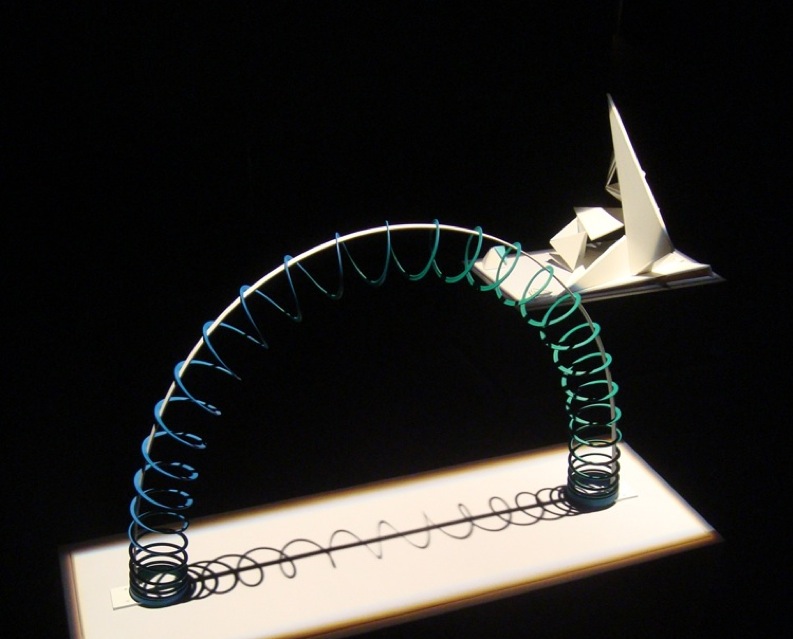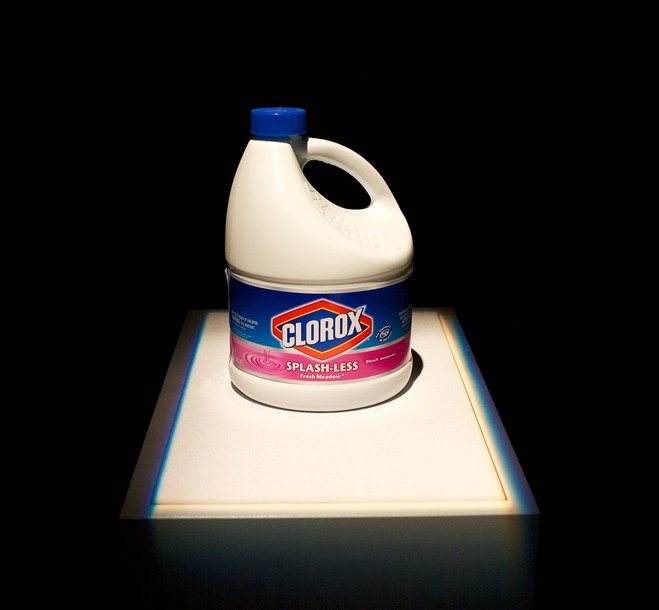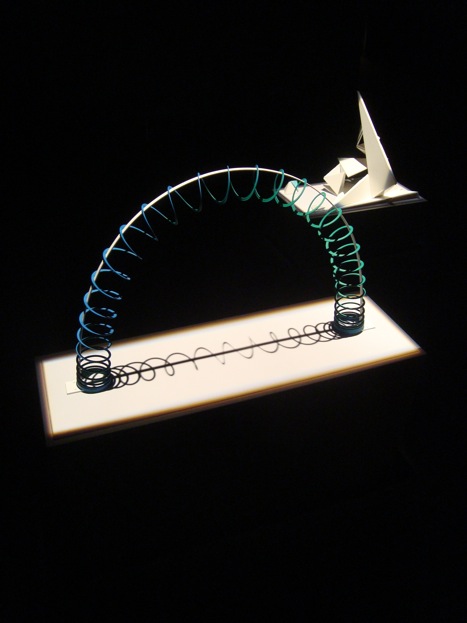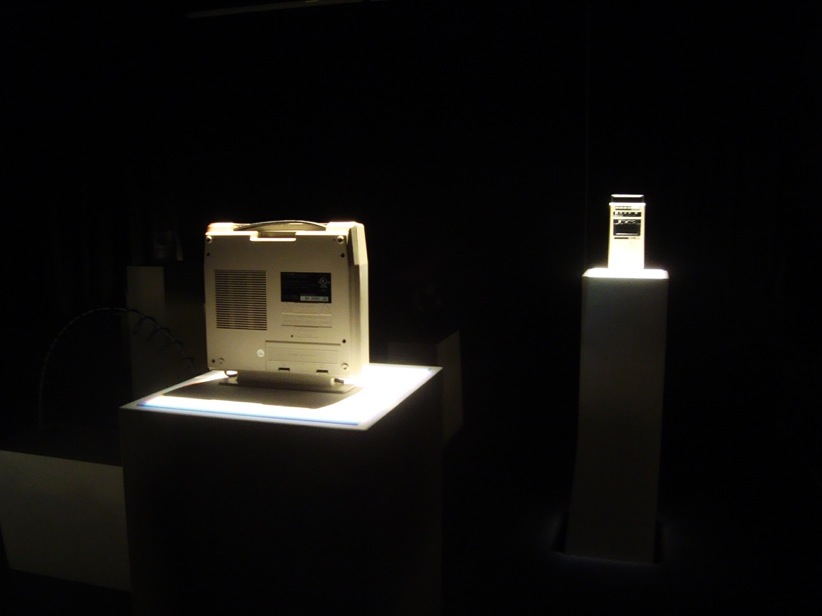
Alexandre Singh in Paris Meet Osmin, an articulate, hilariously obnoxious tape recorder

In La Critique de l’Ecole des Objets at Palais de Tokyo Alexandre Singh examines the complex relationships between the art world, humanness and objecthood in a hilarious but intriguing way.
Sergei Skoffavitch, a talking self-centred ‘post-neo-marxist’ bottle of household bleach, is displayed on a pedestal. He is one of seven common objects, lit by spotlights when they are ‘on scene’. La Critique de l’Ecole des Objets isn’t your conventional stage play. The characters are carrying human names and manifest a vast variety of human manners, but look like and identify themselves as objects. Meet Osmin, an articulate, hilariously obnoxious tape recorder, or Daphne, a smart, elegant, typical high society spring-shaped Slinky toy.
Alexandre Singh (1980), a French-born New York-based Brit of Indian descent shows his installation-play La Critique de l’Ecole des Objets in Paris’ Palais de Tokyo, alternately in French and English. Singh translated the original script in French and re-recorded the soundtrack with French actors. The six characters they represent are all related to the art world in undetermined ways. They engage in discussions about the life of objects and people, material culture, art and specifically about a certain exhibition which bears striking similarities with the present installation (the difference being that the discussed sculpture show doesn’t converse through speakers in the plinths).
La Critique de l’Ecole des Objets takes as its starting point Molière’s comedies of manners L’Ecole des femmes and La Critique de L’Ecole des femmes. The latter is Molières own reply, staging supporters and adversaries to the controversial former play, who in the end are all convinced to have won one’s case. In the same tautological way, La Critique de l’Ecole des Objets criticizes both a (fictive) art show, the cultural state of affairs and itself. This could be considered a metaphor for the art world at large. As a genre, the comedy of manners is often satirical of society’s mores and populated by rather one-dimensional characters. Both these pseudo conventions, as well as the farcelike atmosphere they are likely to produce, are taken up by Singh to provide a conceptual framework for the present installation-play.

Singh’s meditation on the regime of objects considers human beings as part and parcel of it. We are not necessarily higher in hierarchy than the products we put forth, but rather we are as much products of society as brands, functional goods and art works are. Sergei, the bottle of bleach, refers to his product label as his clothes. Questioning the modernist axiom of form following function, the suggestion is that form, or appearance in general, indicates function, and that man is busy rendering himself merely matter with a preconfigured purpose.

Objects, both our collective fetish and a popular victim of cultural critique, form a distinct theme in Singh’s oeuvre. In his project The Marque of the Third Stripe he doesn’t so much glorify or undermine Adidas as a commercial phenomenon, rather he uses it as prism to reflect on a wide range of cultural phenomena. The artist’s book of the same name contains among others digressively related Wikipedia-structured essays and ‘A Dictionary of a Synaesthetic Language’.
With its purposely one-sided types in the form of commodity objects, La Critique de l’Ecole des Objets is a comical but intriguing portrayal of the complex relationships between the art world, humanness and objecthood.
Jesse van Winden volgt de onderzoeksmaster Visual Arts, Media & Architecture aan de Vrije Universiteit, en is redacteur van Kunstlicht.
Jesse van Winden


